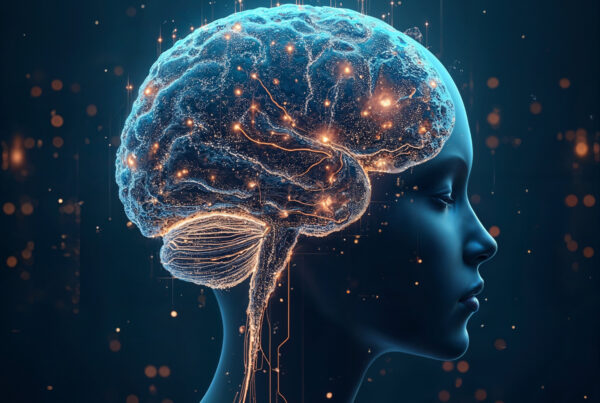Introduction: Is Ketamine Safe for Mental Health Treatment?
Is ketamine safe for mental health treatment? This is a question that has gained increasing relevance as ketamine garners attention for its rapid antidepressant effects. Once known primarily as a surgical anesthetic, ketamine is now at the forefront of psychiatric innovation. In this article, we’ll explore its safety profile, how it compares to other common medications, and what patients can expect when using ketamine for mental health treatment.
A Proven Medical Track Record
Ketamine’s medical use dates back to the 1960s when it was developed as an anesthetic. It has since earned a place on the World Health Organization’s List of Essential Medicines, highlighting its importance and safety in global health care. From the battlefields of Vietnam to emergency rooms worldwide, ketamine has long been trusted for its fast-acting and well-tolerated nature.
FDA Approval and Mental Health Applications
Ketamine was approved by the FDA in 1970 for anesthesia. Its off-label use in psychiatry—particularly for treatment-resistant depression, PTSD, and suicidal ideation—has grown due to compelling clinical evidence. Though not FDA-approved specifically for depression, a form of ketamine called esketamine (Spravato) is approved for treatment-resistant depression, further supporting ketamine’s psychiatric relevance.
Clinical Safety in Mental Health Settings

Unlike anesthesia doses, psychiatric applications of ketamine involve much lower, subanesthetic doses, typically delivered via intravenous (IV), intranasal, or oral routes. These lower doses have demonstrated a strong safety record in both clinical trials and real-world psychiatric settings.
Notably, in a systematic review and meta-analysis by Wilkinson et al. (2018), a single IV dose of ketamine significantly reduced suicidal ideation within 24 hours, with effects lasting up to one week. The treatment was well-tolerated with moderate to large effect sizes across clinical measures.
Comparing Ketamine to SSRIs and Benzodiazepines
Traditional antidepressants like SSRIs (e.g., fluoxetine, sertraline) and benzodiazepines (e.g., alprazolam, lorazepam) come with a host of side effects and dependency risks. SSRIs often cause:
- Nausea
- Sexual dysfunction
- Weight gain
- Sleep disturbances
- Emotional blunting
Benzodiazepines, while effective for acute anxiety, carry a high risk of tolerance, dependence, and withdrawal symptoms. In contrast, ketamine shows a lower risk of dependence in clinical settings when monitored by healthcare professionals.
Fast-Acting Relief and Patient Experience
One of ketamine’s most profound advantages is speed. Unlike SSRIs, which may take weeks to become effective, ketamine can reduce depressive symptoms and suicidal ideation within hours to days. This rapid onset can be lifesaving for patients in crisis and is associated with improved treatment compliance.
Mechanism of Action and Cognitive Benefits
Ketamine works through a different mechanism than most antidepressants. It blocks NMDA receptors, modulating glutamate and promoting neuroplasticity—the brain’s ability to form new neural connections. Patients often report improved mood, cognition, and emotional regulation following treatment.
Some dissociative effects may occur during infusion sessions, but these are typically short-lived and considered part of the therapeutic process.
Side Effects and Their Management
Common side effects include:
- Nausea or vomiting
- Mild increases in blood pressure
- Temporary dissociation or dizziness
These are generally short-term and manageable. Anti-nausea medications and blood pressure monitoring help ensure a comfortable experience. Oral microdosing often presents even fewer side effects.
Addressing Concerns About Misuse
Concerns about ketamine misuse stem mainly from recreational abuse at much higher doses than those used therapeutically. When administered in a clinical setting under medical supervision, ketamine has not shown high rates of misuse or addiction. The classification of ketamine as a Schedule III drug reflects potential for misuse, but in practice, this risk is low in medical contexts.
Conclusion: Safe, Effective, and Supervised
Over five decades of clinical use have demonstrated that ketamine is a safe and valuable medical tool. For psychiatric applications, its low-dose protocols are well-tolerated, effective, and often life-changing. While it’s essential that ketamine treatment be overseen by qualified healthcare providers, the evidence clearly supports its safety when used appropriately.
As more research unfolds and new delivery methods evolve, ketamine stands to become a mainstay in mental health treatment—offering rapid relief and renewed hope for individuals facing conditions that resist traditional therapies.
References
- Wilkinson ST, et al. The Effect of a Single Dose of Intravenous Ketamine on Suicidal Ideation. Am J Psychiatry. 2018;175(2):150–158.
- Hull TD, et al. At-home, sublingual ketamine telehealth treatment: Safety and effectiveness. J Affect Disord. 2022;314:59–67.
- Siegel JS, et al. Prolonged Ketamine Infusion for TRD: Effects on Limbic Connectivity. Psychopharmacology. 2021;238(4):1157–1169.
- Sanacora G, et al. Consensus Statement on the Use of Ketamine in Mood Disorders. JAMA Psychiatry. 2017;74(4):399–405.
- Price RB, et al. Effects of Ketamine on Suicidality in Treatment-Resistant Depression. Biol Psychiatry. 2009;66(5):522–526.




